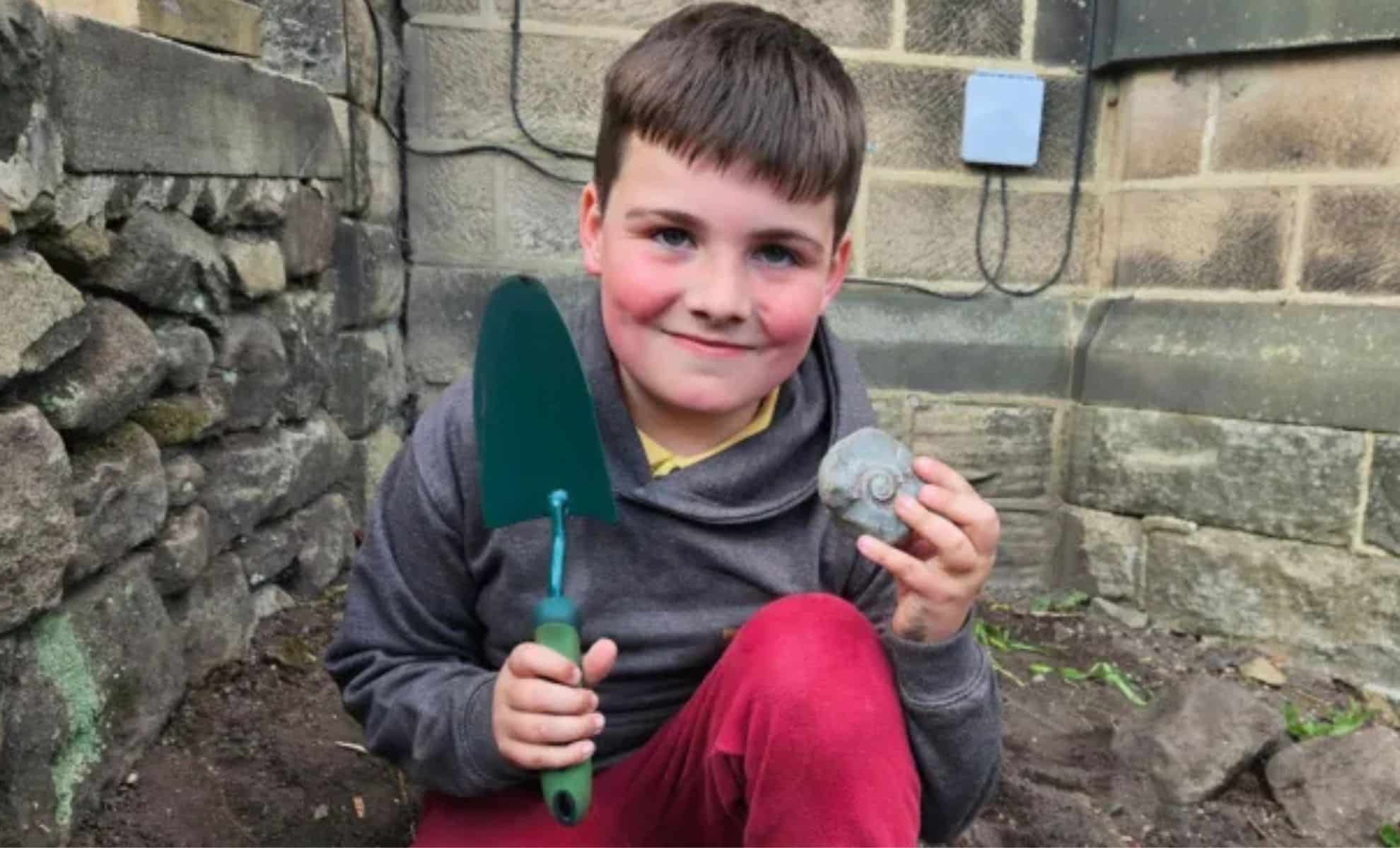A young boy in Matlock, Derbyshire, has unearthed a fascinating and ancient discovery right in his own backyard. Elliott, just seven years old, made a remarkable find while digging in the garden of his new home, uncovering fossils that date back approximately 140 million years. The fossils, believed to be from the Jurassic period, are embedded in limestone rocks that Elliott had unearthed after they became exposed during some gardening work. As reported by BBC News, his discovery, which has both excited paleontologists and inspired the young fossil hunter, provides an incredible glimpse into Earth’s prehistoric past.
A Remarkable Discovery
While working in the front garden, Elliott and his parents cracked open several limestone rocks, and to their astonishment, they found that they were filled with ammonites — spiral-shelled mollusks that thrived in the seas during the Jurassic period. Ammonites are known for their striking, coiled shells and are often used by paleontologists to study the history of marine life and climate during the era of the dinosaurs. These ancient creatures have long been extinct, but their fossils are found in rocks that are millions of years old, helping scientists piece together the puzzle of Earth’s distant past.


Elliott, who has developed a fascination with fossils, was thrilled with his discovery. “I love fossils. It made me really happy we just found it,” he said. His excitement is shared by his mother, Gemma, who expressed how proud she is of her son. “He’s very excited — I’m not sure we like digging up the garden so much. But it’s very exciting what he’s finding,” she added.
How Fossils End Up in Gardens
While the fossils found by Elliott are fascinating, experts believe they were likely not naturally occurring in the immediate area. According to Dr. Susannah Lydon, a palaeontologist at the University of Nottingham, the ammonites were most likely transported from another region, such as Dorset, by collectors or builders. “While Matlock sits on rock that used to be an ancient reef and has lots of its own fossils, these fossils were probably brought from elsewhere,” Dr. Lydon explained. Fossils are often transported for various reasons, from collecting to construction, and this particular find may be an example of that practice.
Dr. Lydon further explained that the fossils are between 140 to 180 million years old, offering a rare glimpse into an ancient world when these mollusks roamed the oceans. The fact that these fossils were found in the garden of a private residence, so far from their original location, adds an intriguing element to the story of how fossils can travel over such great distances.


Fossil Hunting: A Beginner’s Journey
Elliott’s find serves as a reminder that fossil hunting isn’t just for experts — anyone can discover something ancient and exciting with a bit of curiosity and persistence. Dr. Lydon emphasized that fossil hunting can be accessible to all. “The joy of fossil hunting is finding something nothing else has seen for millions of years,” she said. “It gives you a view through all those years.”
For budding paleontologists like Elliott, there’s no need for special equipment — just the knowledge of where to look. Dr. Lydon advised beginners to take a guided tour to learn the kinds of rocks that typically contain fossils. The best places to spot them are cliffs, particularly after a storm, when erosion reveals long-hidden treasures. Elliott’s discovery, a genuine marvel, highlights how curiosity and exploration can bring us closer to understanding Earth’s ancient history.
As Elliott dreams of becoming a palaeontologist one day, his discovery has not only sparked his own fascination but also serves as an inspiring reminder that the world is full of hidden wonders just waiting to be uncovered.




